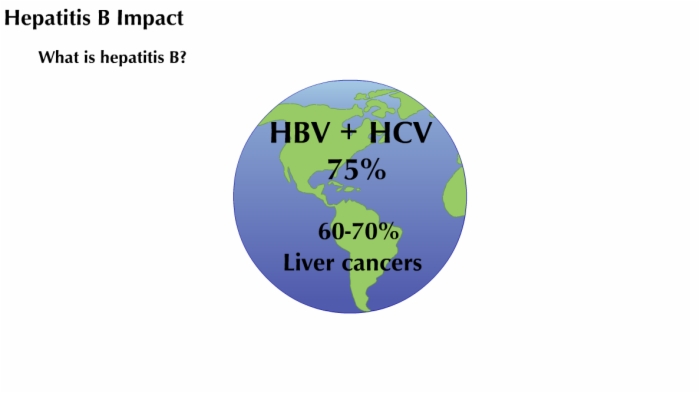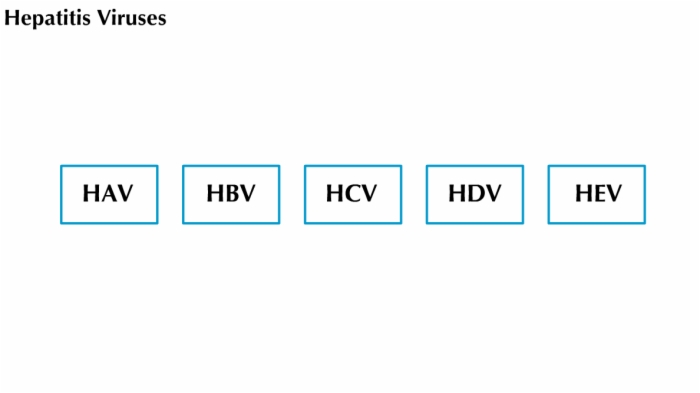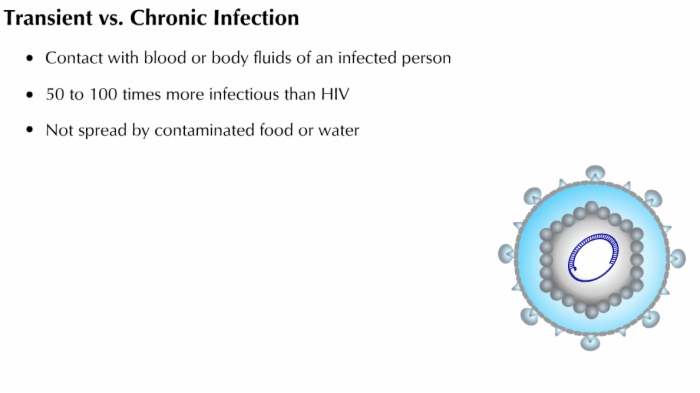SMi Source lesson Infectious Disease: HBV and Chronic Infection has the following microlearning topics
1. HBV Impact and Prevalence


2. What is HBV?


3. HBV Life Cycle


4. HBV Infection


Lesson Infectious Disease: HBV and Chronic Infection teaches these concepts
HBV and Chronic Infection, HBV Impact and Prevalence, Hepatitis B Impact, Infectious Disease
HBV and Chronic Infection, HBV Impact and Prevalence, What is Hepatitis?, Infectious Disease
HBV and Chronic Infection, HBV Impact and Prevalence, The Liver, Infectious Disease
HBV and Chronic Infection, HBV Impact and Prevalence, Hepatitis B Virus, Infectious Disease
HBV and Chronic Infection, HBV Impact and Prevalence, HBV Vaccination Programs, Infectious Disease
HBV and Chronic Infection, HBV Impact and Prevalence, Geographic Distribution of Chronic HBV Infection, Infectious Disease
HBV and Chronic Infection, HBV Impact and Prevalence, Hepatitis B Virus Infection Incidence in the United States, Infectious Disease
Lesson Infectious Disease: HBV and Chronic Infection addresses these key points
Hepatitis B (in combination with hepatitis C):
- Accounts for 75% of all cases of liver disease around the world
- Causes 60-70% of the world’s primary liver cancers
Hepatitis:
- Inflammation of the liver (Hepat = Liver, itis = Inflammation)
- Most cases are due to a viral infection
- 6 types:
- A - enterically-transmitted
- B - blood-borne
- C - blood-borne
- D - blood-borne
- E - enterically-transmitted
- F - blood-borne
Hepatitis viruses differ in their transmission, whether or not they are likely to produce chronic infections, and the severity of the liver disease that they cause.
The Liver:
- Essential to survival
- Maintains blood glucose levels
- Makes essential blood components
- Detoxifies potentially harmful substances
Hepatitis B virus:
- ~2 billion people worldwide show evidence of infection by HBV
- Chronic hepatitis B in ~ 6% of world population (~350 million people)
- 25–40% of those with chronic hepatitis B will eventually die of cirrhosis or liver cancer
- 1 million people die of HBV-related liver disease every year
- Can be prevented through vaccination
- 1991: World Health Organization recommended the vaccine for all children
- 116 countries have included HBV vaccine in their immunization programs
- Since 1994: WHO, UNICEF, and other international donor agencies assist developing countries to obtain HBV vaccine
Geographic distribution of chronic HBV infection:
- In much of the developing world — sub-Saharan Africa, most of Asia, and the Pacific — people usually become infected with HBV in the prenatal period or during childhood.
- High rates of HBV infection are also found in the Amazon and the southern parts of Eastern and Central Europe.
- Infection is less common in Western Europe and North America.
Incidence vs. prevalence of infection in developed countries:
- Incidence of infection is decreasing due to use of the vaccine, screening programs and education programs.
- Prevalence of disease will likely increase due to those people with silent infections.
It is likely that the epidemiology of HBV infection will change over the next few generations in other parts of world as more people are vaccinated early in life.
Lesson Infectious Disease: HBV and Chronic Infection is built from these main references. Log into SMi Source for a complete list and details.
Hepatitis B Virus Biology, 2000, Seeger and Mason
WHO Hepatitis B, 2002
Fields Virology Fourth Edition
Ganem D, Prince AM, N Engl J Med 2004;350:1118-29.
Sablon E, Shapiro F, J Gastroentero Hepatol 2004;19:S329-37.
Lesson Infectious Disease: HBV and Chronic Infection introduces and defines these terms
Incidence: The number of new cases of disease in a given time frame.
Prevalence: The total number of cases of infected persons.